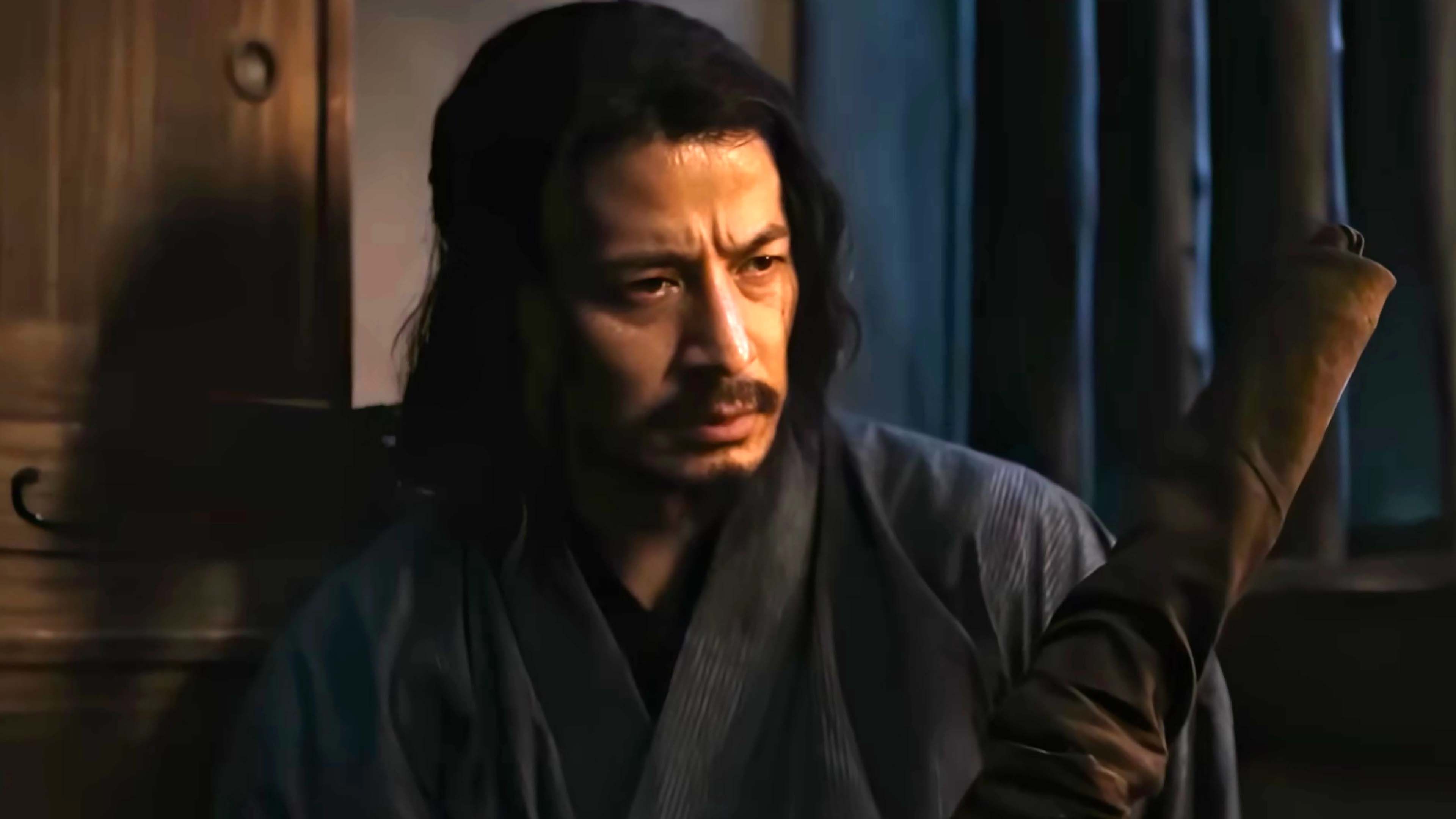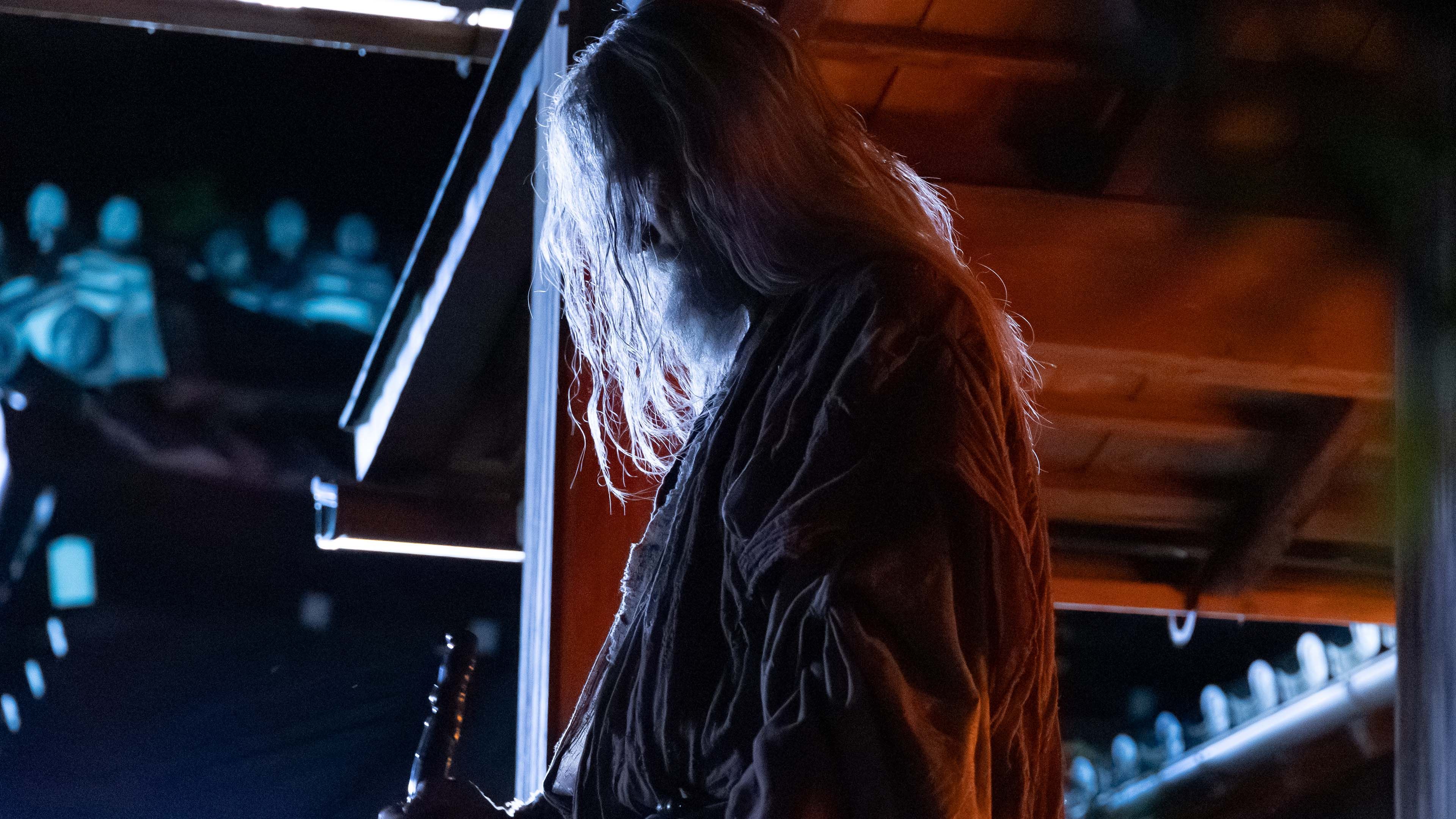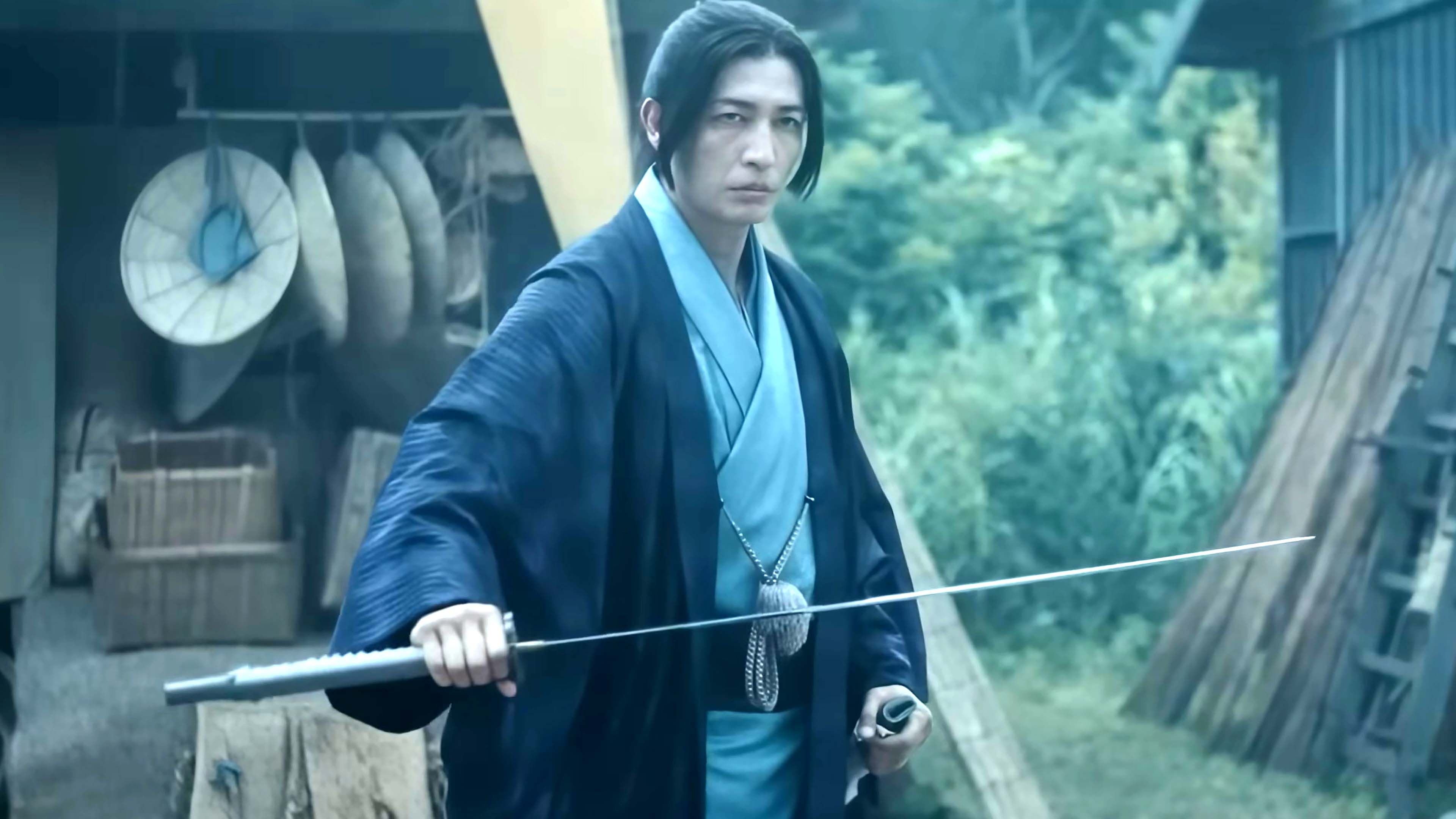
Netflix espera continuar su éxito global con su nueva serie, Last Samurai Standing. Los creadores prometen que es un espectáculo único, diferente a otros del género Battle Royale. Basada en un manga de Shogo Imamura, la serie, desarrollada por Kento Yamaguchi y Michihito Fujii, sigue a un guerrero que se embarca en una batalla de alto riesgo para ganar dinero para la atención médica de su esposa e hijo.
Junichi Okada dirige Last Samurai Standing no sólo como actor, sino también como director creativo y coreógrafo de acción. El programa está generando comparaciones con series populares como Squid Game de Netflix, debido a su formato de competencia con muchos concursantes compitiendo por un gran premio, y Shogun de FX, gracias a su trasfondo histórico japonés. Después de su debut en el Festival Internacional de Cine de Busan, el programa está recibiendo una atención positiva, especialmente por sus impresionantes escenas a gran escala y sus peleas con espadas bien ejecutadas.
Antes del lanzamiento del programa, Joe Deckelmeier habló con Michihito Fujii y Junichi Okada para ScreenRant sobre Last Samurai Standing. Cuando se le preguntó sobre las similitudes con Shogun y Squid Game, el cocreador primero destacó la influencia de Shogun en la narración global, especialmente debido al papel principal y al trabajo de producción de Hiroyuki Sanada. Elogió a Sanada como “uno de los mejores actores de Japón”.
Michihito Fujii shared Japanese culture while working overseas and always gave it his all. He also praised the Korean series Squid Game, calling it a fantastic and highly respectable example of the death game genre.
Fujii believes what makes Last Samurai Standing unique is that it’s a story focused on characters, but with plenty of action. This aligns with early conversations he and Okada had, where they repeatedly used the word “crazy” to describe their vision. They aimed to create a new kind of action for the Netflix manga adaptation and explored how to achieve this while also including references to other historical dramas.
Fujii, having previously adapted works like the 2019 film The Journalist, explained that turning Imamura’s four-volume manga into a TV show was very different from adapting a novel for a movie. However, the chance to work with Netflix was appealing because the platform’s binge-watching format could help keep audiences engaged with Last Samurai Standing from beginning to end.
Michihito Fujii aims to create a relentlessly engaging experience, ensuring the audience is captivated throughout. The story blends elements of a road trip, a life-or-death game, and other exciting external factors. It’s not just about action; viewers will also witness the protagonist’s personal journey and the development of Futaba, played by Yumia Fujisaki. The narrative focuses on their growth, their intertwined destinies, and their struggle for survival. Maintaining a strong human element was key throughout the scriptwriting process, and Fujii personally found it a very enjoyable experience. He hopes viewers will watch all the episodes to fully appreciate the ongoing story, and the team intends to continue developing it further.
As a fan, I was really happy to hear that the team behind the show, especially Okada, were so focused on honoring the original manga, Last Samurai Standing. He really wanted to make sure existing fans would love the adaptation, and it sounds like they succeeded! What’s even better is that the original creator, Mr. Imamura, was heavily involved, helping to bring this historical story to a new audience. It’s clear everyone involved cared deeply about staying true to the source material while making it accessible for today’s viewers.
I really admire Junichi Okada – he’s around my age, and with ‘Last Samurai Standing,’ he had this brilliant idea to bring historical dramas to a new, younger audience. That’s something I’m passionate about too – I don’t want to just recreate another stuffy period piece. I want young people to feel a sense of pride in their culture, and I hope this series can spark that. I have so much respect for Imamura-san and how he managed to make the story so entertaining. Honestly, it was a huge honor when Netflix approached me about working on ‘Last Samurai Standing’ together. They really sold me on the vision, and it felt like it was meant to be – like fate brought us together to make this project happen.
Okada’s First-Time Producing Position Was “Confusing On A Daily Basis”, But That Didn’t Hold Him Back
ScreenRant asked how taking on the roles of lead actor (Shujiro Saga), producer, and action designer impacted his daily work on set.
I’ve handled action choreography on previous projects, so I’m used to wearing both those and the director’s hat. However, this is my first time as a producer, and it’s been a steep learning curve. It’s often confusing because managing the budget is just one part of it – I also need to oversee everything happening on set. There were times when my ideas as an action choreographer clashed with what was feasible from a producer’s standpoint. As an actor, I need to focus on my performance, but I also have to be aware of the bigger picture. It can be distracting, but thankfully, I’m pretty good at juggling everything. I was able to pull it all off thanks to the amazing support of the cast and crew.
ScreenRant asked about the most challenging or risky stunt I personally performed, rather than letting a professional stunt double handle it.
As a fan, I was really excited to hear that Junichi Okada and the team wanted to push themselves with this film, but also stay true to the classic Japanese period drama feel. They definitely learned from past films, but they also wanted to bring something fresh to the story. What I found particularly interesting was their approach to filming – they really prioritized long takes and capturing the energy of each moment. It’s almost a throwback to Kurosawa’s style! They intentionally reduced the amount of CGI, which is pretty unusual these days, aiming for a grand scale but with a really intimate focus on the martial arts. They wanted the camera to feel free and capture all the action, and that meant a lot of coordination. It was a huge challenge, a constant effort every single day, but they really focused on getting something authentic in each take. You can tell it was a real team effort!
ScreenRant asked how the actor’s extensive Brazilian jiu-jitsu training – they hold a fifth-degree black belt – shaped the sword fighting in the film, and how they blended that modern martial art with the realistic fighting styles of 19th-century samurai.
Junichi Okada explained that in martial arts, and especially when playing a character like Shujiro, it’s crucial to act from instinct rather than overthinking. While using your mind is important, he focused on feeling things deeply, almost from the gut. Shujiro, as the lead, shouldn’t hesitate or be swayed by outside influences. As the central figure, it was vital for Okada to portray him in a way that fully engaged the audience. To achieve this, he thoroughly researched authentic samurai movements and physicality. He aimed for a balance of realism and cinematic action, roughly 70% authenticity to 30% action, ensuring audiences saw genuine samurai techniques alongside the necessary action sequences. Being able to make those choices on a scene-by-scene basis was a key strength in his performance.
ScreenRant asked about Shujiro’s motivations in the series: he’s fighting to protect his family. We discussed how challenging it was to weave his intense personal story with the constant, high-energy action sequences.
Junichi Okada describes his character, Shujiro, as a man deeply marked by a traumatic past. Raised only to fight, Shujiro carries the emotional scars of many battles, experiencing PTSD. He enters the game to support his family, but also sees rescuing the girl as a way to heal himself. Okada emphasized that Shujiro isn’t naturally violent; understanding the pain fighting causes him was crucial to the performance. As the main character and a samurai, Shujiro’s actions needed weight and depth, creating a compelling story. Okada worked closely with the director to portray Shujiro’s reluctance to fight and explore what would finally allow him to find peace and move forward.
ScreenRant asked if Last Samurai Standing could help change how people around the world view samurai films, given the desire for Japanese action movies to gain more international recognition.
Junichi Okada believes Japanese cinema can thrive even with the increasing use of CGI. While acknowledging the impressive visuals CGI offers, he feels Japanese filmmaking has traditionally focused on practical effects. He points out that live-action films in Japan haven’t yet reached the same level as Hollywood, and the key is to discover what uniquely Japanese stories can be told. He emphasizes the importance of embracing Japan’s strengths – like historical dramas and rich culture – and blending them with modern technology to create meaningful art for a new generation. Okada believes Japan needs to re-examine and update its cultural identity, and he sees art – including film, manga, and even martial arts – as a way to explore and express that identity. He personally feels sharing authentic Japanese martial arts with the world is a valuable contribution, and that the creative process should stem from a deep understanding of one’s own culture.
Last Samurai Standing’s Epic Scale Gave Fujii A Career-First Experience






ScreenRant asked about the balance in Last Samurai Standing, noting its mix of intense action and emotional depth. They wanted to know how the filmmakers managed to maintain that balance and avoid leaning too heavily into either brutality or beauty.
The project is a historical action drama, a bit like a battle royale with many different elements. I collaborated with Junichi Okada, who has a strong understanding of both history and action – he was the lead actor and a producer. My job was to create compelling and energetic characters within this fictional world, and I feel I really gave it my all.
ScreenRant asked about working with Junichi Okada again after their previous film, Hard Days. They were curious about the collaboration this time, noting his additional roles as a producer and action choreographer.
I directed Michihito Fujii in the film Hard Days, and back then, our roles were pretty separate. This time, it was a much more collaborative process. We really worked together – on the script, the action, everything. It felt like we were a team, almost like a couple or a buddy cop duo. We supported each other throughout. If Junichi had an idea, I did my best to make it happen, and he was also willing to adjust his performance based on my direction. It was a truly great partnership.
ScreenRant asked: With almost 300 samurai fighting for their lives, what was the biggest hurdle for the director in making the six-episode series feel both epic in scope and personal?

We had a huge cast of 300 people! I’ve worked with that many extras before, but this was different – they were all playing individual characters. It was a unique situation, being one person against 292 others. I really had to get to know each contestant as an individual, which took a lot of time. We couldn’t just use background actors; each person needed their own motivations and backstory. We spent a lot of time figuring out why they were fighting, because that was central to the story. We even considered details like their weapons, the number of women, and international representation. Honestly, all the rehearsals and discussions were the hardest part of the whole process.
ScreenRant asked: The Meiji era was a period of huge change for Japan. How crucial was it to base the series on actual historical events, instead of simply focusing on action?
Michihito Fujii explains that the Meiji period was a time of significant change for Japan, marked by increased interaction with other countries and a shift towards Western customs, like clothing. He praises author Shojo Imamura for highlighting the surprising parallels between the Meiji era and today. For example, both periods have faced epidemics – cholera then, COVID now – and both have seen job displacement due to technological advancements. Fujii believes these connections will resonate with modern audiences, making the story particularly relevant and impactful.
ScreenRant: What was the most challenging sequence to capture on camera?
Michihito Fujii explained that the opening scene was incredibly challenging to film. It required building sets on location and coordinating a large group of samurai with precise timing for cannons and explosions. He visited the location repeatedly to plan everything. The scene was meant to demonstrate the team’s commitment to realistic action. While there was a risk of injuries, Fujii and Junichi wanted to create authentic fight choreography instead of relying on visual effects, which proved to be a significant undertaking.
- Мечел префы прогноз. Цена MTLRP
- EUR RUB PRONOSTICO
- STETH PRONOSTICO. STETH criptomoneda
- Chad Powers Temporada 2: Todo lo que sabemos
- USD CNY PRONOSTICO
- BTC PRONOSTICO. BTC criptomoneda
- USD CAD PRONOSTICO
- EUR CLP PRONOSTICO
- USD CLP PRONOSTICO
- LSETH PRONOSTICO. LSETH criptomoneda
2025-11-11 21:13